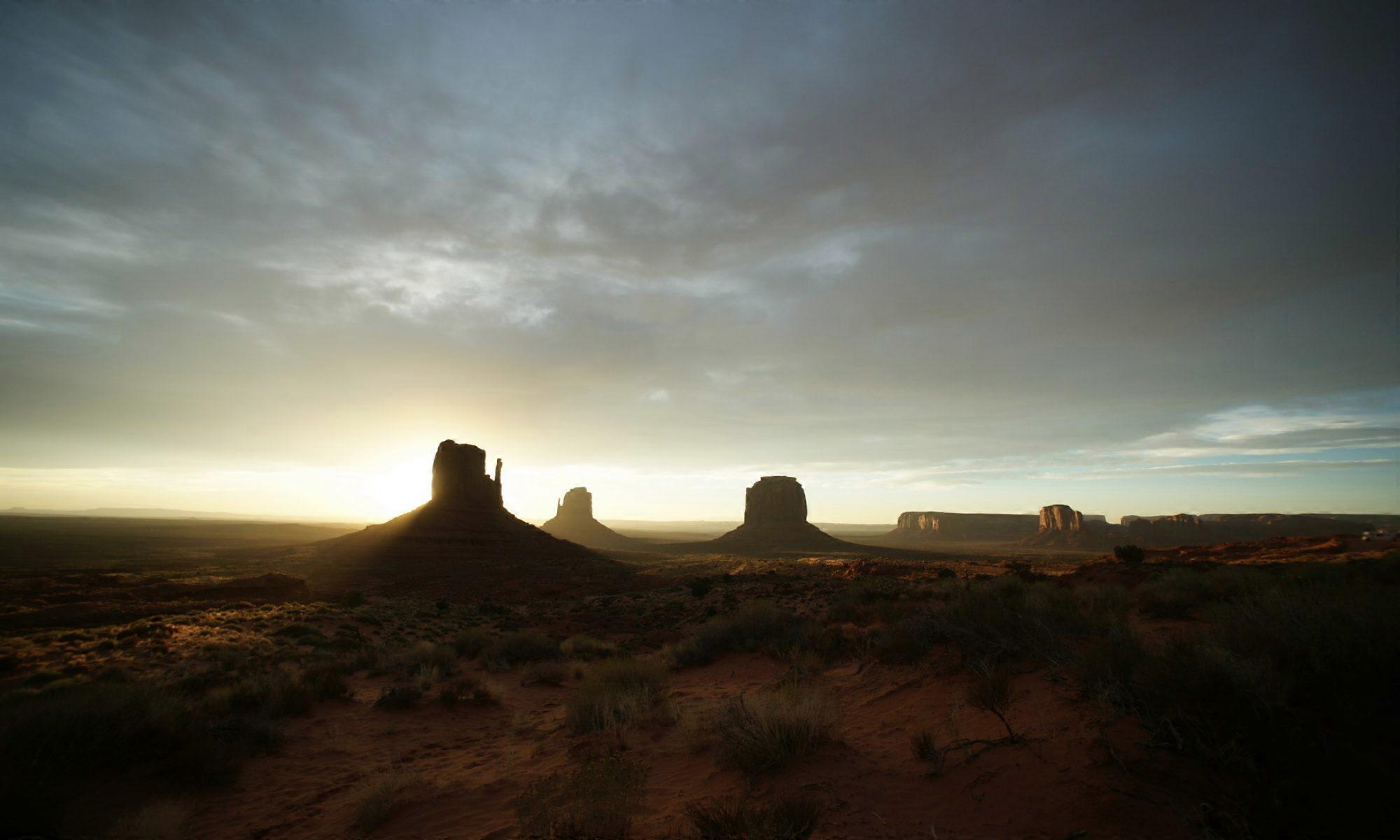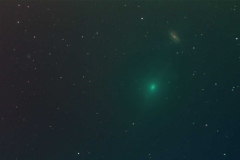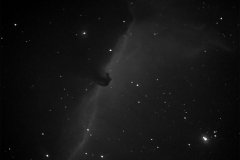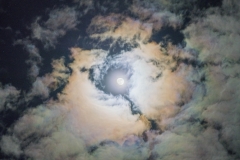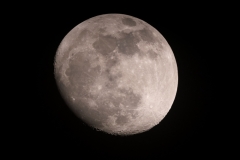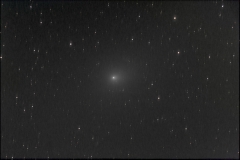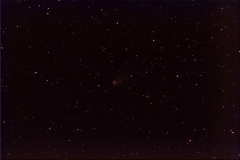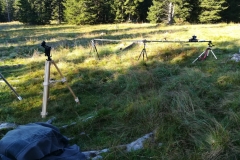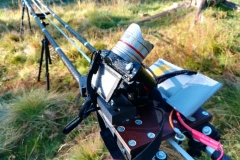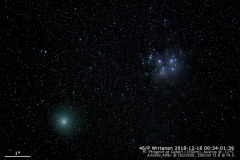It is always frustrating to see good weather pass without the opportunity to do some photography – especially astro-photography. So even if time does not permit a trip to the darker spots in reasonable distance from my home, it is worth a try to setup the telescope on the balcony.
This time, clouds cleared throughout the day (and happend to reappear before midnight). So I had to take the chance to spot Comet C/2018 Y1 Iwamoto. Unfortunately, I was unable to spot the comet through the eyepiece. The sky was far too bright (approximately 18mpss) watching straight over the citys light dome and having a 60% illuminated moon shining bright. Fortunately, through the camera I could make out a smudge, being brighter than the sky.
Processing the 180s subs with 1 hour total exposure time, I could achieve this result (compare to the unprocessed image!):
Image is a composite of 2 stacks (one aligned on stars, second aligned on comet). The comet moved more than 1.5 degrees during the 1 hour capturing time!
Above the comet: NGC 2903 (mag 9 galaxy)
At left: NGC 2916 (mag 12.1 galaxy)
Imaging setup: 800mm f/4.0 Newton, Sony A6000 full spectrum modified, UV/IR block filter, UHC filter, coma corrector (at wrong distance).
20x 180s @ ISO800, darks and flats
Conditions: +2°C, 60% moon, 18-18.5mpss sky in suburban location (with ample street light)
